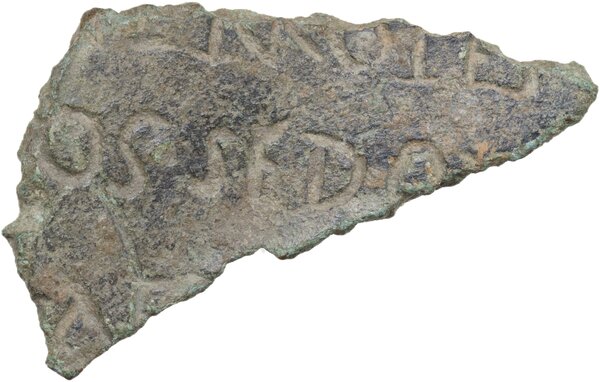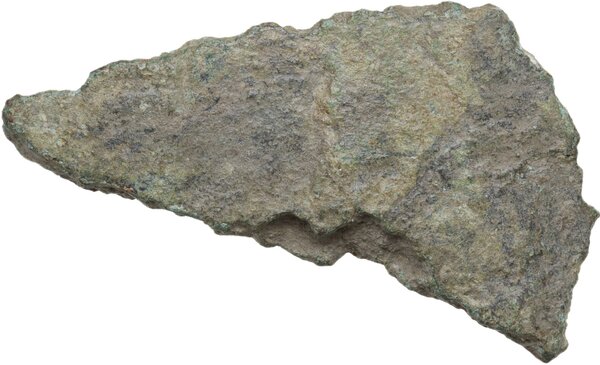

Lot 1014:
ROMAN MILITARY DIPLOMA FRAGMENT
Roman period, c. 2nd-3rd century AD.
Triangular fragment of a Roman military diploma in bronze, of which a partial trace of three lines of text is preserved.
Dimensions: 50x32 mm. Rare and important document. Apparently voluntary truncated. The so-called military diploma was an honourable discharge that was granted to the soldier after a long career in the army, usually after 25 years (28 from the late 3rd century AD).
More precisely, the general structure of a diploma for an auxiliary army veteran is composed as follows
this way:
1) full imperial titling, which allows the precise dating of the year of the reign in which the constitutio was issued;
2) list of the units covered by the constitutio, divided between alae and cohortes, indicated by full name, relative numeral and any epithets
3) mention of the province and provincial governor;
4) legal text granting citizenship and legal recognition of marriage, which underwent changes, sometimes substantial, over time
5) date of the exact day of issue of the constitutio and mention of the consular couple for the current year (or, better, the period of the year, in the case of consules suffecti).
This was followed by the personal part that changed individually, while maintaining a rigid and standardised scheme.
For an auxiliary, the military diploma meant becoming a Roman citizen, as with this document the veteran was automatically granted citizenship.
Roman period, c. 2nd-3rd century AD.
Triangular fragment of a Roman military diploma in bronze, of which a partial trace of three lines of text is preserved.
Dimensions: 50x32 mm. Rare and important document. Apparently voluntary truncated. The so-called military diploma was an honourable discharge that was granted to the soldier after a long career in the army, usually after 25 years (28 from the late 3rd century AD).
More precisely, the general structure of a diploma for an auxiliary army veteran is composed as follows
this way:
1) full imperial titling, which allows the precise dating of the year of the reign in which the constitutio was issued;
2) list of the units covered by the constitutio, divided between alae and cohortes, indicated by full name, relative numeral and any epithets
3) mention of the province and provincial governor;
4) legal text granting citizenship and legal recognition of marriage, which underwent changes, sometimes substantial, over time
5) date of the exact day of issue of the constitutio and mention of the consular couple for the current year (or, better, the period of the year, in the case of consules suffecti).
This was followed by the personal part that changed individually, while maintaining a rigid and standardised scheme.
For an auxiliary, the military diploma meant becoming a Roman citizen, as with this document the veteran was automatically granted citizenship.
Start price € 50
Current price € 500
Bids: 16
No more available for sale.
Current price € 500
Bids: 16
No more available for sale.





